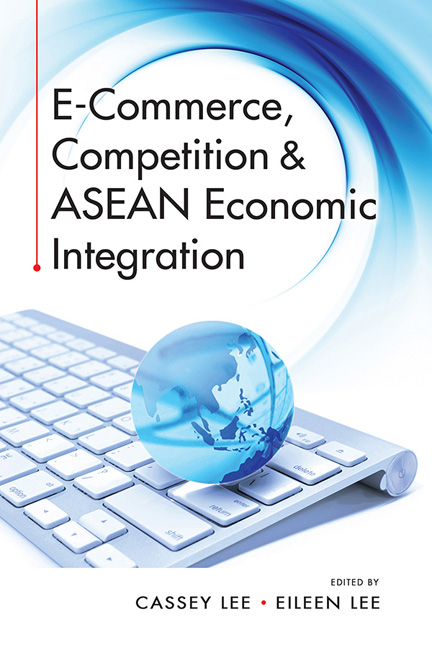Book contents
- Frontmatter
- Contents
- Acknowledgements
- About the Contributors
- 1 Introduction
- PART I
- PART II
- PART III
- PART IV
- 5 E-commerce and its Development in Thailand
- 6 E-commerce Development in Indonesia: Challenges and Prospects
- 7 Development of E-commerce in Malaysia
- 8 E-commerce in Singapore: Current State, Policies and Regulations
- 9 Competition and E-commerce in the Philippines
- 10 Vietnam: E-commerce Market Overview and Trends
- Index
9 - Competition and E-commerce in the Philippines
from PART IV
Published online by Cambridge University Press: 31 January 2020
- Frontmatter
- Contents
- Acknowledgements
- About the Contributors
- 1 Introduction
- PART I
- PART II
- PART III
- PART IV
- 5 E-commerce and its Development in Thailand
- 6 E-commerce Development in Indonesia: Challenges and Prospects
- 7 Development of E-commerce in Malaysia
- 8 E-commerce in Singapore: Current State, Policies and Regulations
- 9 Competition and E-commerce in the Philippines
- 10 Vietnam: E-commerce Market Overview and Trends
- Index
Summary
Introduction
While the Philippines is home to a large and growing number of internet and mobile phone users, e-commerce in the country is still at a nascent stage. Data from the Better Than Cash Alliance (BTCA) showed that e-commerce makes up less than 1 per cent of total commerce in the Philippines in 2015, compared to 4–5 per cent in other neighbouring countries in Southeast Asia. In terms of the necessary infrastructure to facilitate online transactions, the country ranked 89th out of 137 countries, according to a report by the United Nations Conference on Trade and Development (UNCTAD).
Meanwhile, e-commerce continues to affect an increasing number of traditional businesses and industries. In addition, the last few years saw the emergence of new businesses models such as online platforms like Lazada, Zalora and Shopee, and commercial sharing economy services like GrabTaxi and AirBnB. Considering the increasing role that e-commerce will play in firms, this chapter focuses on how e-commerce affects firm productivity. Further, it seeks to contribute to the debate about e-commerce and its effects on competition. Put together, this poses an interesting question from the competition perspective: how does the interplay of e-commerce use and competition shape firm productivity?
E-commerce directly affects firms’ performance by cutting time and costs of production. The resulting savings, in turn, could then be re-allocated to more productive activities. Several studies have shown that selling online results in low distribution costs (Lal and Sarvary 1999; Van Cayseele and Degryse 2000; Wadhwani 2000; DePrince and Ford 1999), as the internet has made it possible for goods and services to move from producers to end-consumers without going through the entire traditional supply chain. Cost efficiency may also be achieved through e-commerce by rationalizing firms’ processes in purchasing inputs (Degraeve and Roodhooft 2001; Konings and Roodhoft 2002; Sinha 2000). Purchasing online also lowers administrative and inventory holding costs, reduces maverick buying and saves time (Benjamin and Wigand 1995; Whyte 2000; Aberdeen Group 2001). Examining the impact of the internet on transaction cost, Garicano and Kaplan (2001) find that the internet has resulted in a large drop in coordination costs due to process improvements and marketplace benefits that make it easier and less costly to search for products, compare prices or find buyers.
- Type
- Chapter
- Information
- E-Commerce, Competition and ASEAN Economic Integration , pp. 232 - 270Publisher: ISEAS–Yusof Ishak InstitutePrint publication year: 2019

